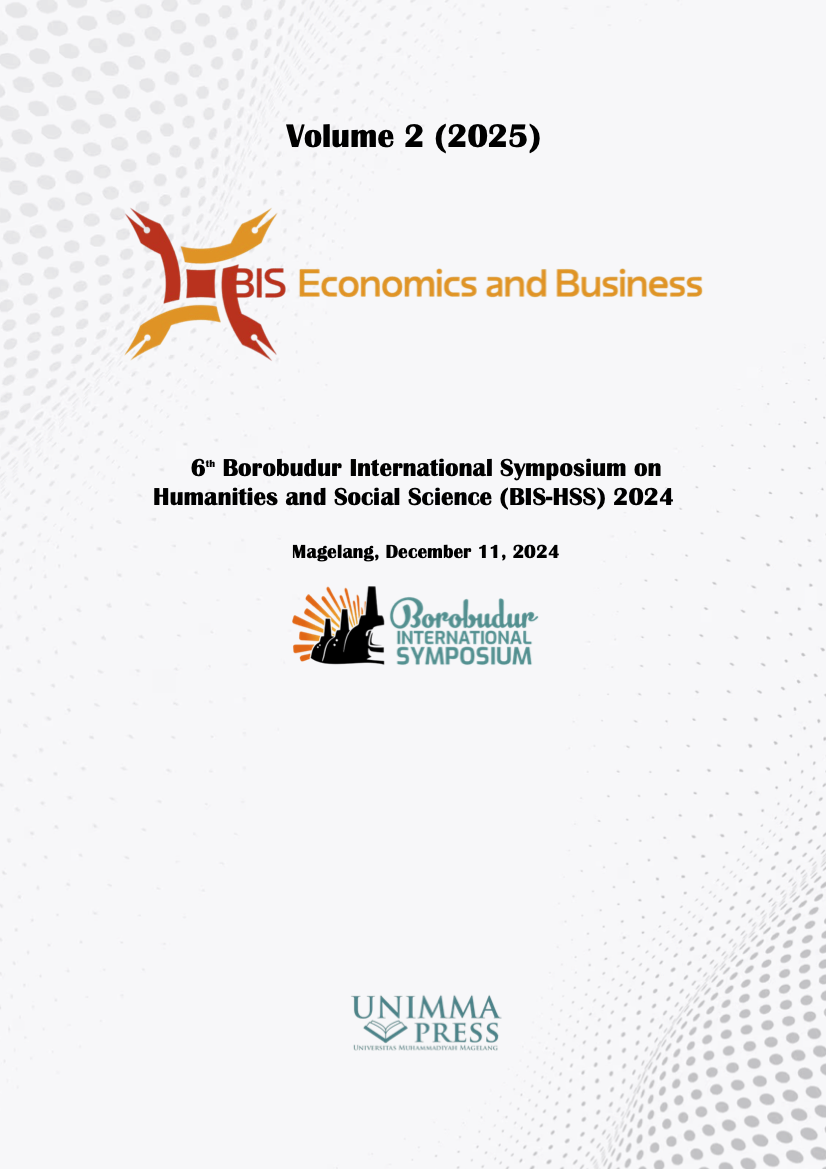Green innovation for sustainable performance: insights from the TOE framework
Keywords:
Sustainable performance, Green innovation, TOE framework, MSMEsAbstract
The issue of environmental degradation has intensified significantly over the past decade. Governments, society, and businesses have increasingly engaged in discussions on how to ensure the achievement of sustainable development. Following the Paris Agreement, the adoption of green innovation practices has garnered substantial attention worldwide. In Indonesia, Micro, Small, and Medium Enterprises (MSMEs), as the backbone of the nation, play a crucial role in implementing green innovation to ensure sustainable performance. Using the Technology-Organization-Environment (TOE) framework, this study examines the determinants of green innovation and its impact on sustainable performance. A survey was conducted with 180 manufacturing MSMEs, and the data were analyzed using the partial least squares method. The results indicate that technology factors, organizational factors, and environmental factors positively influence green innovation. Furthermore, green innovation is identified as a critical factor for achieving sustainable performance. This study contributes theoretically by expanding the development of models that investigate green innovation and sustainable performance. Practically, it offers insights into sustaining sustainable development by positioning MSMEs as key stakeholders.
References
1. R. Ramadhan, M. T. Mon, S. Tangparitkul, R. Tansuchat, and D. A. Agustin, “Carbon capture, utilization, and storage in Indonesia: An update on storage capacity, current status, economic viability, and policy,” Energy Geoscience, p. 100335, 2024.
2. M. A. Baloch, I. Ozturk, F. V. Bekun, and D. Khan, “Modeling the dynamic linkage between financial development, energy innovation, and environmental quality: does globalization matter?,” Bus Strategy Environ, vol. 30, no. 1, pp. 176–184, 2021.
3. M. N. Alraja, R. Imran, B. M. Khashab, and M. Shah, “Technological Innovation, Sustainable Green Practices and SMEs Sustainable Performance in Times of Crisis (COVID-19 pandemic),” Information Systems Frontiers, vol. 24, no. 4, pp. 1081–1105, Aug. 2022, doi: 10.1007/s10796-022-10250-z.
4. Y. Zhang, J. Sun, Z. Yang, and Y. Wang, “Critical success factors of green innovation: Technology, organization and environment readiness,” J Clean Prod, vol. 264, p. 121701, 2020.
5. N. R. Khan, F. Ameer, R. B. Bouncken, and J. G. Covin, “Corporate sustainability entrepreneurship: The role of green entrepreneurial orientation and organizational resilience capacity for green innovation,” J Bus Res, vol. 169, p. 114296, 2023.
6. F. Chien, H. W. Kamran, M. A. Nawaz, N. N. Thach, P. D. Long, and Z. A. Baloch, “Assessing the prioritization of barriers toward green innovation: small and medium enterprises Nexus,” Environ Dev Sustain, pp. 1–31, 2021.
7. H. Salmenperä, “Different pathways to a recycling society–Comparison of the transitions in Austria, Sweden and Finland,” J Clean Prod, vol. 292, p. 125986, 2021.
8. F. Aligarh, B. Sutopo, and W. Widarjo, “The antecedents of cloud computing adoption and its consequences for MSMEs’ performance: A model based on the Technology-Organization-Environment (TOE) framework,” Cogent Business & Management, vol. 10, no. 2, p. 2220190, 2023.
9. M. Dadhich and K. K. Hiran, “Empirical investigation of extended TOE model on Corporate Environment Sustainability and dimensions of operating performance of SMEs: A high order PLS-ANN approach,” J Clean Prod, vol. 363, Aug. 2022, doi: 10.1016/j.jclepro.2022.132309.
10. E. Yadegaridehkordi, B. Foroughi, M. Iranmanesh, M. Nilashi, and M. Ghobakhloo, “Determinants of environmental, financial, and social sustainable performance of manufacturing SMEs in Malaysia,” Sustain Prod Consum, vol. 35, pp. 129–140, 2023.
11. N. T. K. Chi, “Driving factors for green innovation in agricultural production: An empirical study in an emerging economy,” J Clean Prod, vol. 368, p. 132965, 2022.
12. J. F. Hair, J. J. Risher, M. Sarstedt, and C. M. Ringle, “When to use and how to report the results of PLS-SEM,” European business review, vol. 31, no. 1, pp. 2–24, 2019.
13. S. Ullah, T. Ahmad, B. Lyu, A. Sami, M. Kukreti, and A. Yvaz, “Integrating external stakeholders for improvement in green innovation performance: role of green knowledge integration capability and regulatory pressure,” International Journal of Innovation Science, vol. 16, no. 4, pp. 640–657, 2024.
F. Zhang and L. Zhu, “Enhancing corporate sustainable development: Stakeholder pressures, organizational learning, and green innovation,” Bus Strategy Environ, vol. 28, no. 6, pp. 1012–1026, 2019.
Downloads
Published
Conference Proceedings Volume
Section
License

This work is licensed under a Creative Commons Attribution-NonCommercial 4.0 International License.

